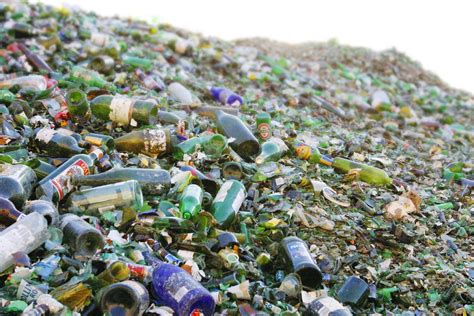Is Our Recycling Actually Recycled?
Both here at home and across the country, the facts about recycling and sustainability are often overlooked.

April 6, 2022
Our recycling actually gets recycled right? That’s not a question most people debate due to the seeming obviousness of the answer. However, in recent years global recycling has struggled: in 2017 ,only about 35 percent of total recyclable waste was actually recycled. Here at Heritage High School, every classroom has a big blue recycling bin. While they appear to be used correctly, some teachers have said they’re often used improperly or not at all. One administrator summed up the situation saying “Some people are good about recycling, but some people totally ignore that”.
Inspired by a presentation done by a group of government students, we interviewed different members of our Heritage community about recycling and our role in a sustainable society. The questions we asked were all the same, but the answers we received varied. Questions included “Do you believe that students and faculty are properly educated on recycling and act on that knowledge appropriately ?”, and “Do you believe that recycling at Heritage High school is sufficient for today’s climate and why?”
When it comes to recycling at Heritage, experiences and opinions vary among faculty and students. According to some teachers, the recurring theme of recycling issues came down to miscommunication between administrators, faculty, and students. Others just think they aren’t being utilized properly. One teacher who wished to remain anonymous said “As long as I have been here there have been recycling bins and posters where programs or certain clubs have been in charge of them. But there’s never been a consistent policy from anyone in the administrative level”.
The largest difference in opinion is between the administrators and the janitorial staff. When asked about students’ capability to successfully recycle, one faculty member said, “I think students [are aware of how to recycle] because now it is what you do at your home, so you are somewhat knowledgeable about the practice of recycling.” However, when asked the same question, a member of the janitorial staff replied “We need to properly educate students to properly recycle items around the school”.
Clearly there is a gap in communication between the different levels of Heritage staff and students. However, most students understand one thing: the lack of emphasis on sustainability and recycling. “There is no policy really, we just do whatever we want with our trash,” said one student. “Our ecosystems would be much safer if everyone understood the importance of recycling,” answered another. We live in an age where climate change and sustainability is more essential than ever, and the generation spearheading the climate movement is Gen Z: the teenagers who will be living here after the older generations are gone. If any meaningful change is to be accomplished, student organizations have the highest chances of educating and succeeding. The current recycling rate at Heritage is not sufficient to support today’s climate, and we live in a rapidly growing area where recycling and other sustainability issues will only continue to increase.
New solutions to this old problem are scarce, and with seemingly more important issues constantly needing addressing, the creation of efficient and sustainable habits at Heritage don’t appear to be a priority. One of the main struggles is finding an incentive to motivate students. There is very little that schools can offer to students, let alone students to other students.
Some students and societies have proposed solutions such as volunteer hours for honors societies by making posters and rewarding students with volunteer points. But while that may serve as an incentive for students in NHS or other honors societies, that solution doesn’t provide a motive or incentive for the majority of students who aren’t involved with those organizations.
As we struggle with recycling here at home, the global culture and perspective is rapidly changing. According to the Bureau of International Recycling, recycling is a $200 billion industry. And in many countries, recycling is viewed as a governmental issue rather than someone’s personal responsibility.
For many years, the United States shipped the majority of their recyclable waste to China to be processed and reused. But in 2018, China refused to import any more “foreign garbage,” leaving the USA with tons of recyclable material on their hands. While the US does have their own centers and facilities to properly recycle waste, they do not have the resources to deal with all of the recycling the country creates.
By not recycling correctly, humanity is producing an astonishing 2.12 billion tons of waste every year. Nearly 300 million tons of plastic waste is produced every year, half of which is single-use. Ninety one percent of global plastic waste is not recycled, and the majority of this plastic ends up rotting in landfills or polluting our oceans.
Global change starts at home, and in order to make an impact in our school or town, we must take action and go the extra step to make our environment more green and sustainable. We often don’t think that throwing our soda bottle in the trash instead of recycling will have an impact on us or the world, but everyone’s actions do have an impact, and if we don’t take responsibility for our trash it will soon catch up to us.
Interviews by Maddie Scassa
Article by Tristan Hasseman



